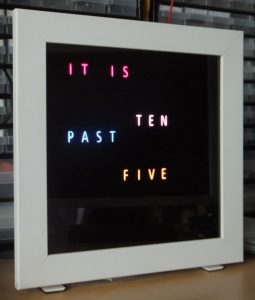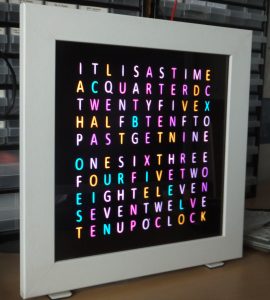I originally made my Word Clocks using PICAXE micro-controllers, some LED drivers, and plain, white, LEDs.
A while ago, I decided to upgrade them to colour LEDs; specifically the WS2812B type of LEDs which are serially addressable, and can be controlled directly from a micro-controller. I also changed the micro-controller to an Arduino. I originally built two of these clocks, and in the updated versions one is using an Arduino UNO, and the other an Arduino Nano – the same micro-controller, but in different formats.
The clock continuously, randomly, fades the colour of each word from one colour to another.


Recent Comments